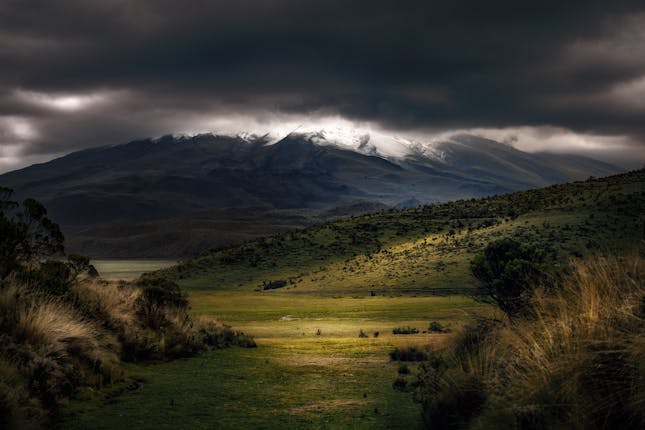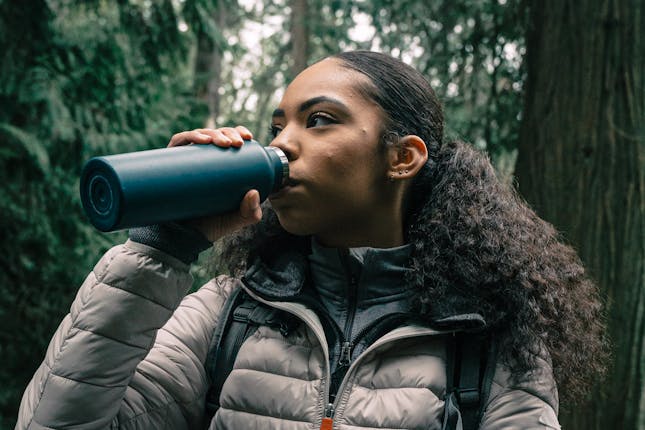
Imagine you’re about to embark on a scenic trail, surrounded by the beauty of nature. Now, I want to ensure that you’re not just equipped with excitement but also with the knowledge to make your hike safe and memorable. Hiking can provide a refreshing escape into the wild, but it’s not without its risks. From unpredictable weather to challenging terrain, the great outdoors presents a myriad of situations where a fun trek can turn treacherous.
What are the 10 rules for hiking safety that you must know?
In the next few minutes, you’re going to find out about the importance of being prepared, both mentally and physically, for your journey through nature. We’ll delve into why it’s vital to understand the challenges you might face and how to handle them with composure. This isn’t just about avoiding hazards; it’s also about enhancing your connection with the environment responsibly.
With an increase in hiking’s popularity, there’s been a rise in rescue operations and accidents in the wilderness. This tells us that thorough preparation isn’t just a choice, it’s a necessity. You’ll come to see that a safe hike requires more than just good footwear and a water bottle.
Pre-Trip Planning: The Blueprint of a Safe Hike
I’m going to break down why pre-trip planning is not just the first step but the foundation of hiking safety. To set the stage for a memorable and safe hiking adventure, you need to start with solid groundwork.
Understanding the difficulty level and specific features of your intended hike can help you prepare accordingly. Whether it’s steep elevations, potentially tricky river crossings, or areas known for wildlife, you’re better off knowing about it before you hit the trail. What is the distance? All this information helps you to understand the time estimated to complete the hike.
Don’t worry too much about your trip itinerary feeling a bit structured; it’s a vital aspect of your safety to notify someone about where you are going, a hike can change from delightful to dangerous in no time.
In my opinion, it’s the detailed planning that often separates a safe hiker from an at-risk one. A lot is happening very quickly when you’re out in the wilderness, and having a plan is one thing that’ll keep you grounded.
Be Weather-Wise: To Prevent Mishaps
Check the forecast right before you set out. Yes, even if you looked at it the night before. Weather can change rapidly, especially in mountainous areas, and you’ll want to be prepared for all conditions. It may be wise to start you hike earlier to avoid a forcasted afternoon change in the weather.
Along with this, consider the weather for the week previous to your hike. If you’ve had plenty of rain, the track may still be wet and slippery, or creek crossings may be more dangerous or impossible. It’s about considering all possibilities and being prepared.

Know Your Limits: Don’t Push it Too Far
Choose something that resonates with you when planning your trip – a trail that matches your experience level and fitness, and don’t forget to account for the length of time you’ll be out.
Walking at a pace that you find comfortable can prevent unnecessary strain. It’s a marathon, not a sprint, when it comes to hiking. The path ahead is calling, but if you rush, you might miss the chorus of birds or the rustle of leaves underfoot, not to mention the unnecessary toll on your body.
While on the trail listen to your body if you are really struggling and it’s quicker and easier to turn back then do it. You can always complete the trail another time. I’ve been on many a hike where we’ve made the decision to turn back or take a shorter route. The last thing you want to be doing is hiking in the dark.
If a section of the trail looks dangerous, turn back. There’s a lot of wisdom in acknowledging what you can and cannot, or should not, attempt.
Gear Up Right: Appropriate Clothing and Footwear
Having the right gear is like having a trusty sidekick in the world of hiking; it can make all the difference when it comes to your safety and comfort on the trail. Imagine stepping out onto uneven terrain without sturdy boots or being caught in a sudden downpour without a waterproof jacket – not the ideal scenario, right? So, let’s ensure you’re equipped to handle the unpredictability of Mother Nature.
A good pair of boots is where it all begins. They should offer ankle support, grip well even on wet surfaces, and fit comfortably with your hiking socks. Blisters or a twisted ankle can end a hike abruptly, and I bet you want to enjoy your outing without such mishaps. Here are my recommendations on hiking gear.
Pack the Essentials: Your Saviours in an Emergency
Never underestimate the power of a well-stocked first aid kit. From adhesive bandages for minor cuts to splints for sprains, you want to be prepared. Add in items like antiseptic wipes, insect repellent, and sunblock, and you’re on your way to tackling most small emergencies head-on.
You’ll also want to arm yourself with navigation aids. Even though many trails are well-marked, a map and compass – or a GPS device – can be lifesavers when signs are missing or if fog descends. Believe me, electronic gadgets can fail, so knowing how to read a map or compass is a skill worth its weight in gold. A headlamp is a must in my backpack. You never know what can happen and hiking in the dark is no fun. Remember to check it before every hike.
Remember, the right equipment isn’t just about staying safe; it’s about increasing your overall enjoyment of the hike. When you’re not worrying about a soaked-through shirt or navigating blindly, you can truly immerse yourself in the awe-inspiring vistas and the pure joy of hiking.
Maintaining Health and Hydration: The Lifeline of a Hiker
You’ve been navigating trails with a sharp eye, but another crucial aspect of hiking safety is maintaining your health and hydration. Think of it as keeping the engine of your car well-oiled; your body needs the same attention to keep you moving.
Hydration isn’t a suggestion; it’s a necessity. You should drink water regularly, not just when you’re thirsty. On the trail, aim for about half a liter of water per hour as a baseline. However, this can vary based on your individual needs, weather conditions, and the intensity of the hike.
Staying hydrated isn’t just about drinking your eight glasses a day. It’s about knowing the signs your body gives when it needs more. Headaches, dizziness, and dry mouth can be telltale signs of dehydration. If you’re well-acquainted with the signs of heat exhaustion and heatstroke, you’ll be better prepared to act swiftly if they occur.
Energy is another factor that needs constant replenishing. Packing nutrient-rich snacks or meals that don’t weigh you down is your ticket to sustaining stamina. Choose foods high in complex carbohydrates and proteins for slow-release energy that keeps you going.

Navigating Trails Safely: Pathway Practices to Follow
I’m going to lay out some crucial tips for navigating trails safely. It’s not just about reaching the summit or your planned destination; it’s also about making the journey without unnecessary risk.
Choosing the right path and sticking to marked trails is vital. Straying off course can damage fragile ecosystems and potentially lead to you getting lost. Pay close attention to trail markers and signs. These are your best friends in the wild; they guide you, keep you on track, and offer critical information about distances and directions.
What if you lose your way? You’re going to find out about remaining calm, which is key. Stop moving, assess your surroundings, and consult your map or GPS. If you’re still unsure, retrace your steps to the last known point on your trail. It’s often safer and more efficient than forging ahead with doubt.
Respect Wildlife: You Are in Their Home
Don’t underestimate the importance of wildlife safety. Keep a safe distance from animals and understand how to secure your food away from curious creatures. This isn’t just for your safety, it’s for the well-being of the wildlife as well.

Communication: Maintaining Contact
When hiking in a group, it’s important to be aware of and keep sight of those infront and behind you. Nominate a strong hiker to be at the tail to ensure no one gets left behind. I don’t recommend hiking on your own, particularly if you are a novice. Carrying a whistle to attract attention is also a great idea.
First-aid Knowledge: A Lifesaver
I’m about to transition into a more serious but vital area of focus. Even with meticulous planning and adherence to all safety rules, emergencies can still arise. Responding properly to these situations is what can make the difference between a minor hiccup and a serious one.
It’s great having a well stocked first -aid kit but knowing how to use it is just as important. Learn how to treat common hiking injuries like blisters, sprains, and cuts. Taking a basic first-aid course is a great idea and can give you the confidence to help in any situation, not just on the track. Read up on basic first aid here.
Conclusion: Embracing Responsibility for a Safe Hiking Journey
So now you’ve reached the end, equipped with the know-how to hike smartly and safely. Remember, each time you lace up your hiking boots, you’re not just stepping onto a trail; you’re stepping into a responsibility to both yourself and to mother nature.
The 10 rules we’ve discussed are more than just guidelines; they are the foundation for an approach that prioritizes safety, pleasure, and respect for the environment. Each rule is a piece of the puzzle that, when combined, offers peace of mind in the great outdoors.
In my opinion, the best hiker is a safe hiker. But let’s not forget that hiking is also supposed to be enjoyable. When you’re well-prepared, you’re free to soak in the beauty around you, chase the horizon, and return home with tales of adventure, not tales of misfortune.
Finally, I really hope that you embark on your next hike with confidence, knowing you have the tools and wisdom to do it safely.
Happy hiking!
Please leave any comments or questions here.

Hiking is an activity that must be carefully planned. You can’t go hiking as if you went walking somewhere in a Random mountain! Yes, you must be prepared for difficult steeps and all. Personally, I enjoy checking my shoes and the difficult of the road before going hiking. Also, I always have a bottle of water, anti mosquito spray and cereal/protein bars.
Hello Lyn
Your article is a well-structured and informative guide that effectively covers the essentials for anyone planning a safe hiking trip. The clear and concise rules, such as staying on marked trails, packing appropriately, and being aware of weather conditions, provide valuable reminders for both beginners and seasoned hikers. The inclusion of practical tips, like letting someone know your plans and carrying a first-aid kit, enhances the article’s usefulness. Overall, the content is engaging and helpful, making it a great resource for promoting safe hiking practices.
The article “10 Rules for Hiking Safety” by you is a valuable guide for both novice and experienced hikers, emphasizing the importance of safety while enjoying outdoor adventures.The article outlines crucial safety rules for hiking, such as informing someone about your hiking plans, carrying a map and compass, and checking weather conditions before setting out.The article offers advice on improving navigational skills and ensuring you don’t get lost during your hike.
Your article is an informative and practical resource for anyone interested in hiking. By covering essential safety tips, proper preparation, navigational skills, and emergency readiness, the article provides valuable information to help hikers enjoy their adventures while minimizing risks. Emphasizing both personal safety and environmental respect, it supports a safe and enjoyable hiking experience.
This article is a fantastic guide for anyone planning to hit the trails! I couldn’t agree more about the importance of pre-trip planning. It’s like laying the groundwork for a safe and enjoyable hike knowing what to expect can make all the difference. The emphasis on weather awareness is spot-on too; nature is unpredictable, and being prepared is key.
I also appreciate the reminder to listen to our bodies and know our limits. Hiking should be a fulfilling experience, not a race, and sometimes turning back is the smartest move. The tips on gear and hydration are practical and essential, ensuring that we’re not just safe but also comfortable. Plus, your advice on respecting wildlife is a crucial reminder that we’re visitors in their home.
Overall, this article is a thorough and thoughtful guide that blends safety with the joy of hiking. I’ll be keeping these tips in mind on my next adventure!
Wow thanks for reminding us the rules for safe hiking! Personally, I didn’t respect all of these rules because I went to a hike where I wasn’t clear made for. It had lots of ups and hills, and I was so tired at the end of the hike! But it was rewarding as well. Also, I never brought a first-aid kit in my stuff, maybe I should start right now!